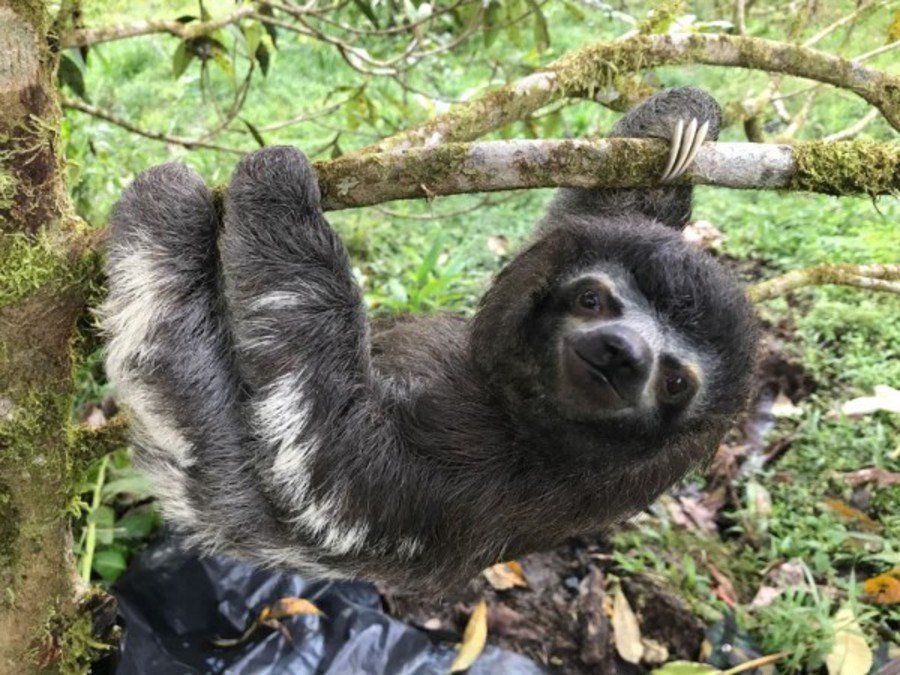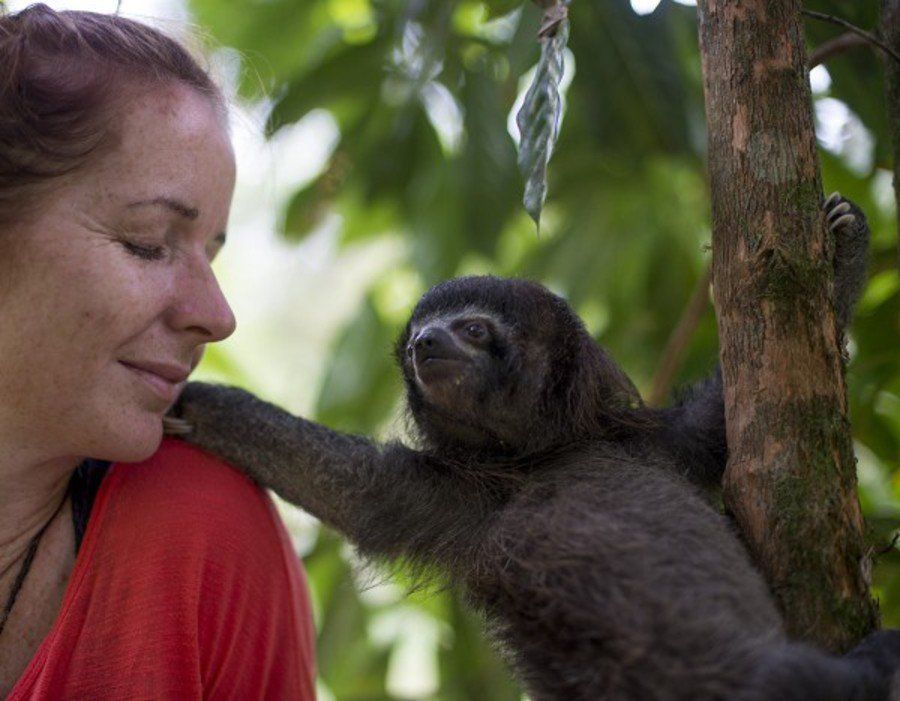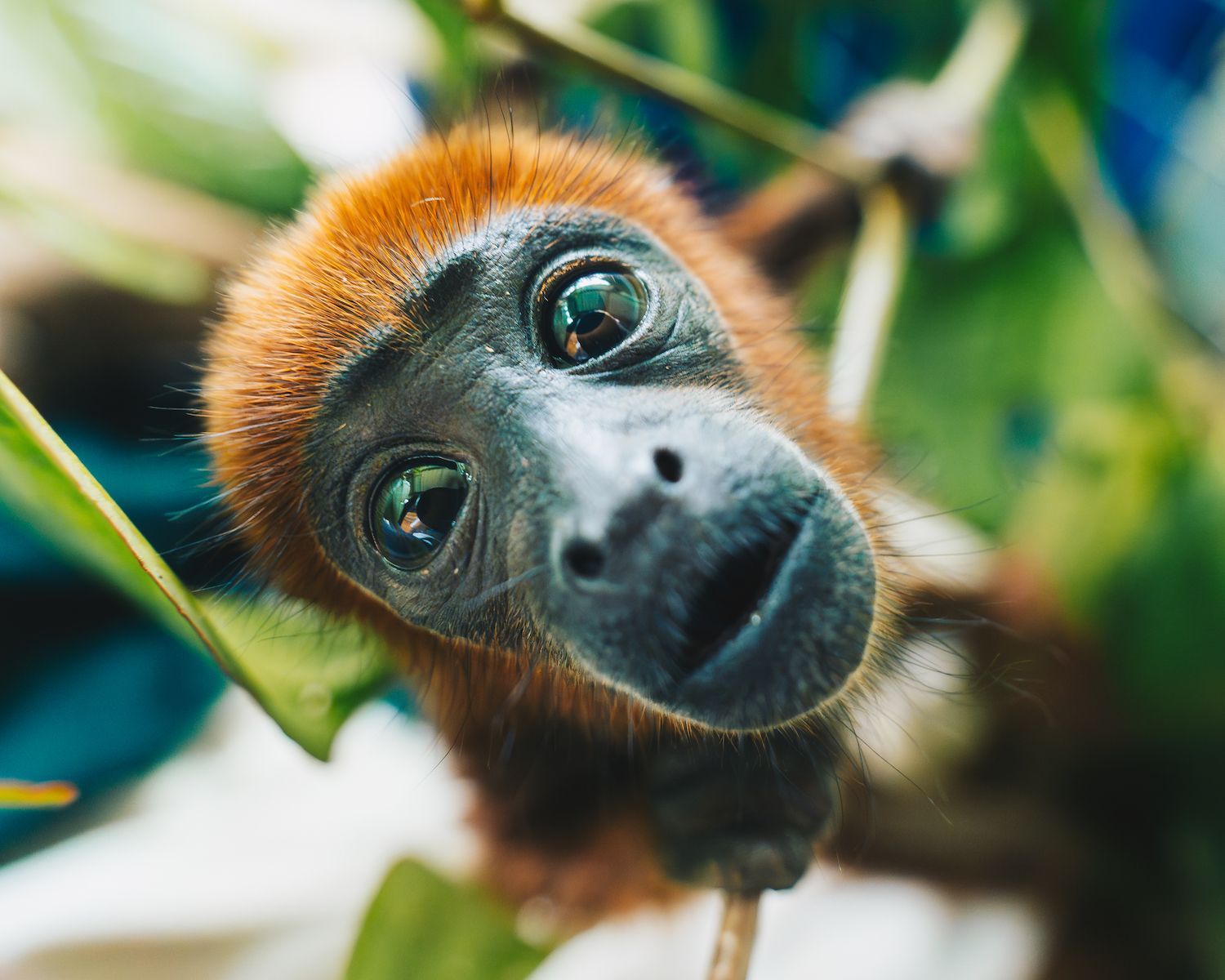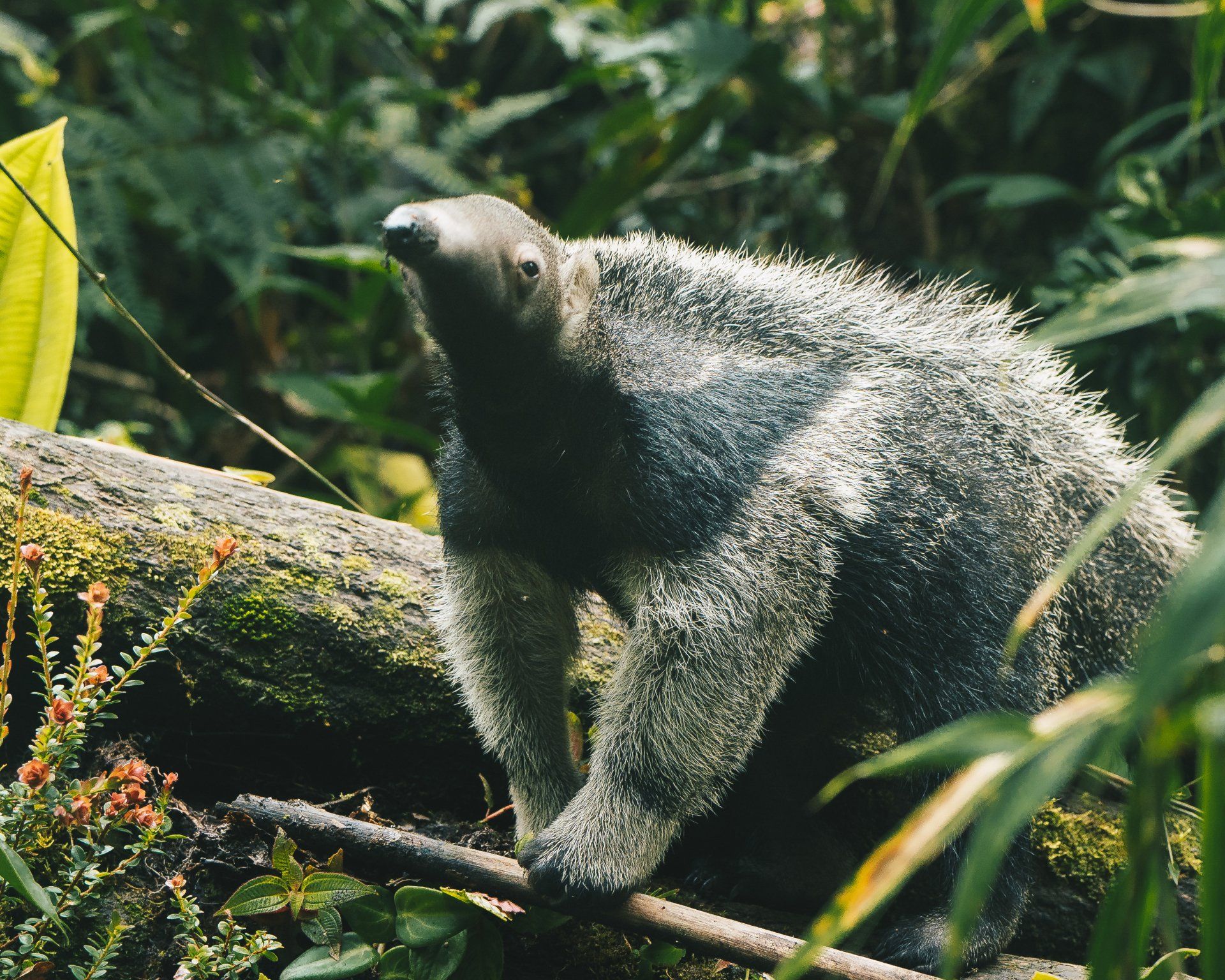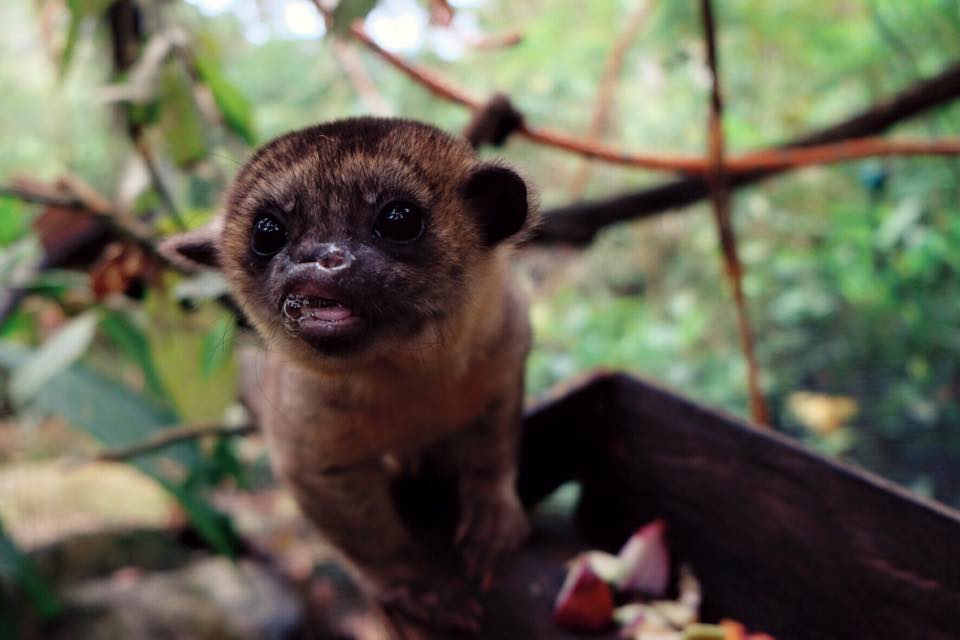Saving a Sloth: the Story of Alí
Jul 14, 2017
It seems only yesterday that baby three-toed sloth Alí arrived here not older than a day, crying and soaking wet. Her survival changes were next to nothing. But now, a year later, she has grown well and is preparing for a free life in the jungle! Read more and watch a small compilation video of Alí here.
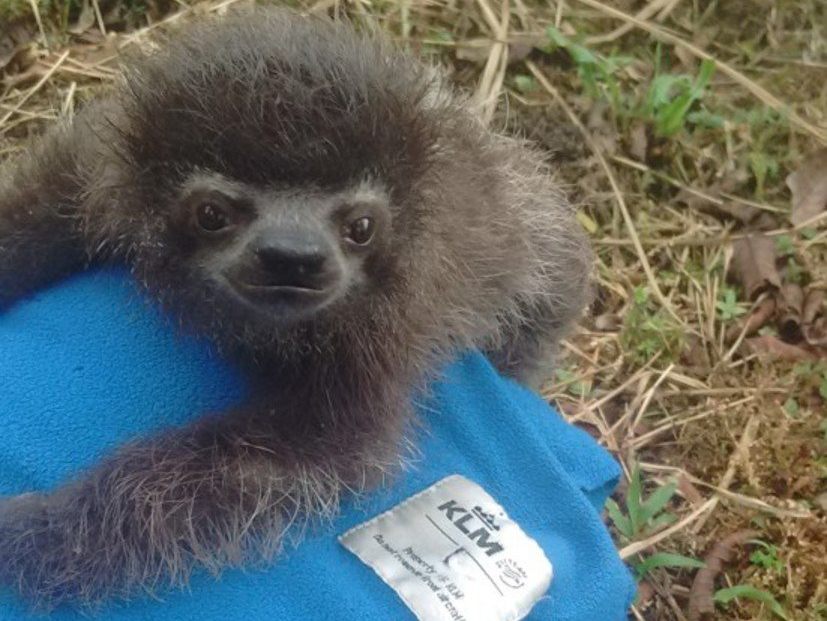
Alí was confiscated at the nearby police checkpoint of Mera on a drizzly Sunday night, the 14th of August 2016. She was maybe one or two days old, weighing merely 280 grams and cried during the entire trip to Merazonia. It was heartbreaking. At this age the survival changes for a three toed sloth such as Alí, are next to nothing.
So we tried not to get our hopes up, but we did get into action immediately, starting intensive care and contacting sloth experts. People spontaneously offered help too, such as our Ecuadorian volunteer Belén, who showed up the next day with the vital ingredient for a delicate three-toed baby sloth: fresh goat’s milk.
Saving a sloth
Saving a sloth is hard work. Throughout the first few months of Alí’s life, we fed her milk every other hour. Any parent of a newborn knows how tough those broken nights can be. And even with this care, Alí balanced between life and death several times. But with our veterinarian Louisa on her side, she pulled through every time and kept growing bigger and stronger. Also because Alí’s ‘dealer’ Darwin and his loyal team of goats provided her with her preferred fix: fresh milk!
Little by little more leaves were added to the mix and less milk was given. In the wild she would have been weaned already, but well, we take extra caution with her because it is a fragile animal and because we are not her natural mommy. She hardly drinks milk anymore though and mostly eats fresh leaves and buds, as she is supposed to. We took her out to explore the jungle every day and she climbed higher and higher into bigger and bigger trees.
Radio telemetry
She has been living in trees by herself ever since and rarely comes down to greet us. When she does, we weigh her and monitor her physical development. We also decided to equip her with a radio tracker, so that we can monitor her movements and locate her in case she decides it is time to move deeper into the jungle.
We are able to do so thanks to a grant given to us by the Sacramento zoo. With this grant we bought several radio collars specifically designed for sloths, one of which will be put on little Alí. Not only can we make sure she is safe, but it will also provide us with valuable scientific data on the behaviour and natural movement of sloths. A big thank you to Laura, Geri and Thomas from International Veterinary Care for securing us the grant and bringing the equipment personally to Ecuador!
Merazonia receives many trafficked animals throughout the year. For one animal to survive and flourish again, it usually takes a lot of passion and dedication from our team and our volunteers. Alí has had a minimum of contact with people. A select few of our team gave Alí the attention that a baby sloth needs to survive. And we were only able to do so because of the many great volunteers that are passing through our centre, attending all the other creatures in our care.
Wildlife rehabilitation
In our experience the best results in wildlife rehabilitation are reached when people come together. Not only here at Merazonia but through the collaboration of different wildlife players such as rescue centres, biologists, authorities and donors. We are especially thankful to Tinka Plese from the Colombian ngo AIUNAU: without the information she shared with us, it is doubtful if Alí would have survived those critical first months. And she still is of great help.
We also appreciate the input of Sam Trull of the Sloth Institute in Costa Rica for her advice on release protocols and radio collars; we are grateful for the ad hoc help we received from Kelly and Sarah of the Amazoonico rescue centre in Napo, Ecuador; and we thank Victor Curicama – head of the department of Biodiversity of the Ministry of Environment Pastaza – for his support and the information he provided on the type of leaves that wild sloths eat.
Living in the Merazonia reserve
Alí still has an important step to make in becoming independent by letting go of that last bit of security and warmth we provide her with. But before she is really going to explore the wild wide jungle, we thought we would inform you on how she has been doing, as we know she has a special place in the hearts of many. For us it will surely be a tough and bittersweet moment to see our youngest daughter leave the nest. We hope she will be taking it easy and that she will be skanking it slow for many years to come within the Merazonia wildlife reserve!
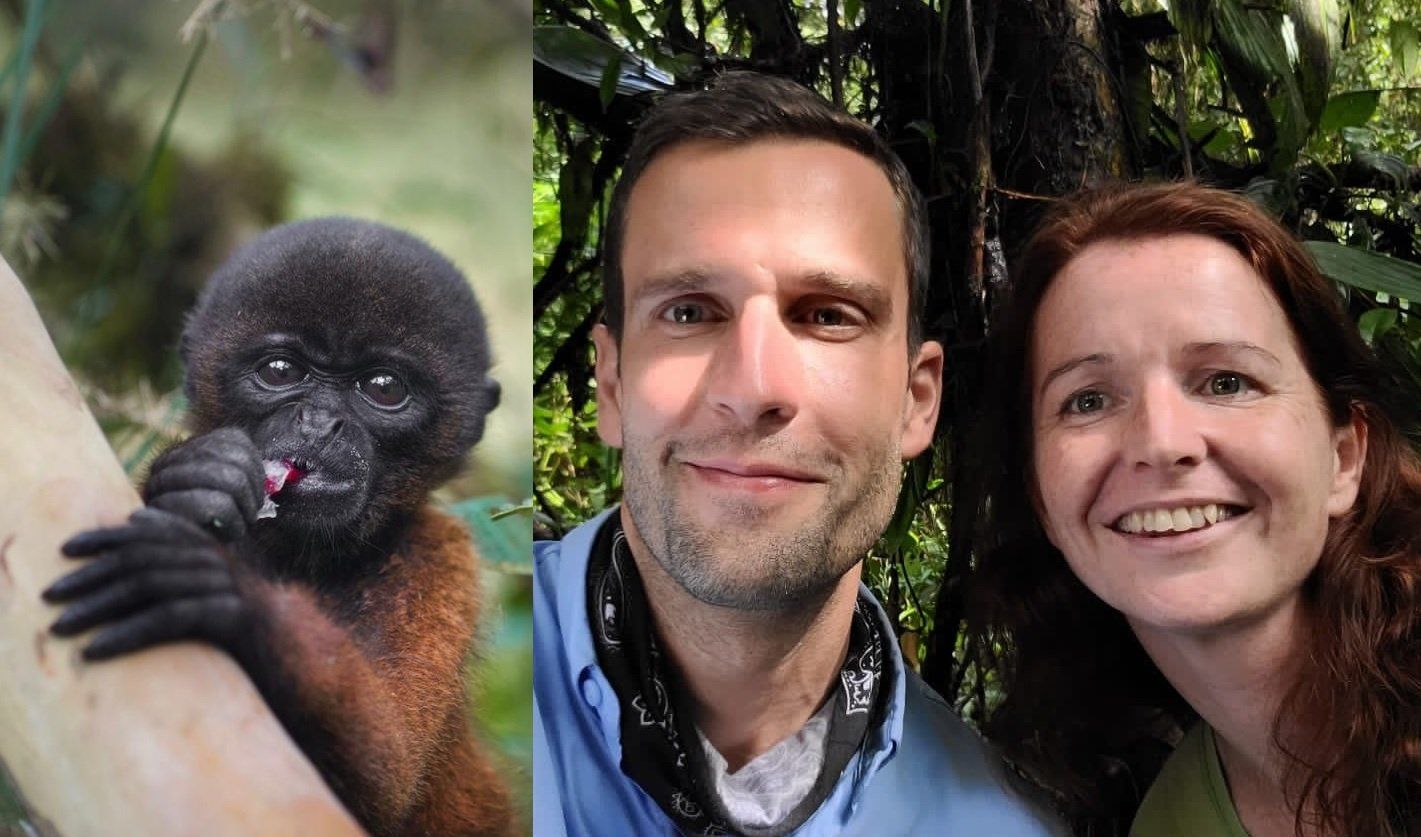
For more information or to volunteer:
WhatsApp:
ANIMAL EMERGENCIES:
All Rights Reserved | Merazonia
Website designed by Whitwell Digital




